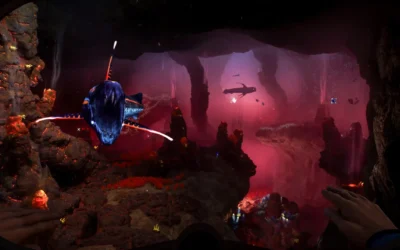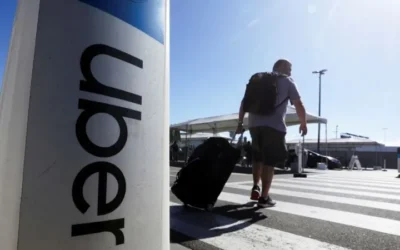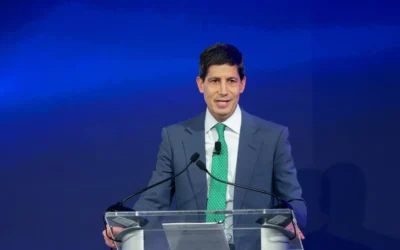Volcanic Eruption Erupts in Iceland, Reigniting Concerns
Iceland, known for its striking landscapes and geothermal wonders, is once again witnessing the power of nature as a volcano erupts, sending cascades of lava flowing from beneath the earth’s crust. This eruption comes on the heels of several smaller seismic activities that had already put residents and authorities on high alert. The recent volcanic activity has not only disrupted the lives of nearby residents but has also led to the evacuation of iconic tourist spots, including the famous Blue Lagoon.
The Eruption: What We Know
Located near the town of Grindavík on the Reykjanes Peninsula, the volcano erupted in early September 2023, spewing molten lava and ash into the air. According to the Icelandic Meteorological Office, the volcano had shown signs of increased seismic activity for weeks prior to the eruption, leading to widespread speculation and monitoring. Though the eruption itself was sudden, scientists believe it was the culmination of tectonic movements that had been building over time.
Initial reports indicated that the lava was flowing at a vigorous pace, creating new fissures and altering the landscape dramatically. Inhabitants of Grindavík, a town with a population of approximately 3,500, were immediately placed under evacuation orders. Authorities advised residents to leave the area without delay, prioritizing their safety as volcanic gases began to fill the air.
Impact on the Blue Lagoon
The Blue Lagoon, one of Iceland’s most frequented attractions, was also placed under evacuation orders. Known for its comforting, mineral-rich waters, the spa attracts thousands of visitors each year. However, its proximity to the eruption site raised serious concerns about safety. Geothermal activity can lead to unpredictable changes in water temperatures and increased levels of harmful gases, putting both guests and staff at risk.
In a statement, the management of the Blue Lagoon expressed their commitment to the safety of their guests and employees. “We are monitoring the situation closely and following the guidance of emergency services. The safety of everyone is our top priority,” a spokesperson said.
Authorities Responding to the Crisis
Iceland’s civil protection agency, in coordination with the police and other local authorities, launched an immediate response to the eruption. Helicopter reconnaissance flights were deployed over the area to assess the flow of lava and monitor air quality levels. Road closures were also enacted to prevent residents and tourists from approaching hazardous zones.
Additionally, a temporary shelter was established at a local sports hall where evacuated residents could stay safely until they receive further instructions. The authorities have continuously updated the public through regular briefings, emphasizing the fluid nature of the situation and urging everyone to stay alert.
Historical Context: Iceland’s Volcanic Activity
Volcanic eruptions are not uncommon in Iceland, which sits atop the Mid-Atlantic Ridge, where the North American and Eurasian tectonic plates meet. The country has a rich history of volcanic activity, with major eruptions occurring as recently as 2010 with the Eyjafjallajökull eruption, which caused significant disruptions to air travel across Europe.
Iceland’s unique geology combines breathtaking beauty with natural danger. The country’s authorities have gained substantial experience in managing volcanic crises, which has become crucial in ensuring the safety of residents and the continuity of tourism, an important contributor to the national economy.
Effects on Tourism
The eruption has immediate impacts on tourism in the region. With roads closed and the Blue Lagoon evacuated, visitors currently in Iceland are left with limited options. Although travel operators quickly adapted, offering alternative tours and activities, the overall atmosphere has shifted, with many potential visitors now contemplating the risks associated with visiting a volcanic island.
“We’re seeing a substantial number of cancellations because people are obviously concerned about their safety. It’s a natural response when an eruption occurs so close to areas frequented by tourists,” said Jakob Simonsson, a local tour operator.
A Community Resilient Through Nature’s Trials
Despite the chaos that eruptions can bring, many residents of Grindavík are no strangers to the embedded risks of living in Iceland. The community has a long history of resilience in the face of nature’s trials. Local businesses that thrive on tourism have expressed hope that this current situation won’t deter future visitors but rather foster a greater appreciation for the raw power of the natural world.
Many locals have even taken to social media to share updates with travelers around the globe, demonstrating both camaraderie and a spirit of connectivity that goes beyond their immediate concerns. A local café owner humorously tweeted, “Come for the lava, stay for the coffee!” indicating a light-hearted approach to an otherwise serious situation.
The Future: Monitoring and Preparation
Looking ahead, the situation remains dynamic, with scientists and volcanologists closely monitoring ongoing seismic activity. It is advised for residents and tourists to remain informed through official channels, including Iceland’s Meteorological Office and civil protection agency, as they provide real-time updates on the volcano’s behavior and safety protocols.
Authorities have also pledged to enhance emergency preparedness plans, knowing the importance of being equipped for future eruptions. Educational campaigns regarding safety during volcanic activity will likely become more prevalent in schools and community centers, as residents are reminded that awareness is key to survival.
Conclusion: Nature’s Call for Respect
Iceland’s recent volcanic eruption serves as a stark reminder of nature’s formidable strength. It calls into question how communities can not only survive but thrive amid such unpredictability. As residents await the return to normalcy, they also embrace their identity as inhabitants of a land molded by fire and ice.
For those looking to visit the enchanting landscapes of Iceland, patience, understanding, and respect for nature’s forces will undoubtedly create a more meaningful experience. As always, the spirit of the Icelandic people, coupled with their love for their land, will shine brightly in these challenging times.
For now, the Blue Lagoon may be temporarily closed, but its spirit endures as a beacon of hope, resilience, and beauty in the heart of the Icelandic landscape. As the lava flows, so too does the determination of a community ready to rise again, ready to face whatever nature may bring.







